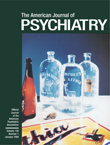Letters to the Editor
To the Editor: Boronow et al. describe the case of Z, a 36-year-old man who suffered an unremitting course of psychotic depression due to the complication of catatonia. The patient’s catatonia, along with the family’s reluctance, prevented Z from receiving what the authors felt was the treatment of choice, ECT. Z received courses of oral lorazepam and diazepam and, possibly, intramuscular diazepam, but the report does not mention the use of parenteral lorazepam.
Acute response of catatonia to lorazepam appears to be independent of manner of administration (1–3). Rosebush et al. (1) contended that response to lorazepam in their patients, four of whom were already receiving standing oral doses of benzodiazepines, was due to increased blood levels. Parenteral lorazepam, which produces rapid increases in plasma levels more reliably than other benzodiazepines, might be effective in nonresponders to oral benzodiazepines. We report a series of elderly patients with psychotic depression and catatonia (six men and one woman with a mean age of 73), treated with intramuscular lorazepam alone. All were referred to our geriatric psychiatry inpatient service for involuntary ECT. All had failed to respond to antidepressants with antipsychotics. Six had mutism, three negativism, three withdrawal, and one refusal to eat. A single dose of intramuscular lorazepam (2 mg in six patients, 0.5 mg in one) was given. Relief of catatonia, permitting meaningful conversation, occurred in six of seven patients within 2 hours. Responders were maintained on a regimen of oral lorazepam. Four went on to respond to ECT given on a voluntary basis; one responded to a course of oral risperidone, which his catatonia had previously prevented him from complying with; and one enjoyed a full remission of depression without further intervention. Response was dramatic in our responders.
Z received a course of intramuscular imipramine involuntarily; therefore, intramuscular lorazepam could have been justified on the basis of safety. We acknowledge that Z’s length of illness could have decreased the likelihood of response to additional intramuscular lorazepam, but we feel that this intervention may have offered Z another opportunity to actively participate in the ECT consent process. We believe that any patient whose catatonia interferes with assessment or treatment of an underlying serious psychiatric illness, and who refuses or does not respond to oral benzodiazepines, should receive a trial of intravenous lorazepam (3), if safety permits. We refer to this as the “lorazepam challenge test,” a term coined by our late mentor, T. George Bidder, M.D.
1. Rosebush P, Hildebrand A, Furlong B, Mazurek M: Catatonic syndrome in a general inpatient population: frequency, clinical presentation, and response to lorazepam. J Clin Psychiatry 1990; 51:357–362Medline, Google Scholar
2. Ungvari GS, Leung CM, Wong MK, Lau J: Benzodiazepines in the treatment of catatonic syndrome. Acta Psychiatr Scand 1994; 89:285–288Crossref, Medline, Google Scholar
3. Bush G, Fink M, Petrides G, Dowling F, Francis A: Catatonia, II: treatment with lorazepam and electroconvulsive therapy. Acta Psychiatr Scand 1996; 93:137–143Crossref, Medline, Google Scholar



